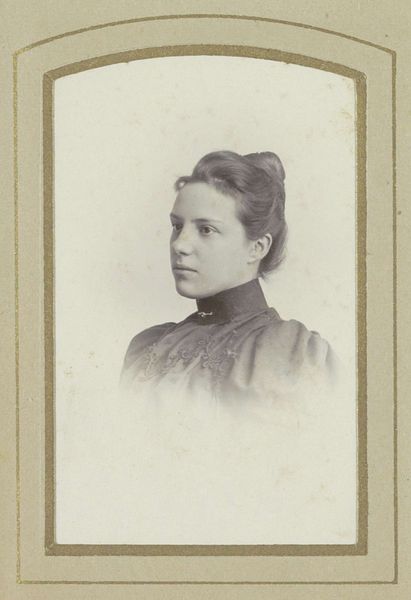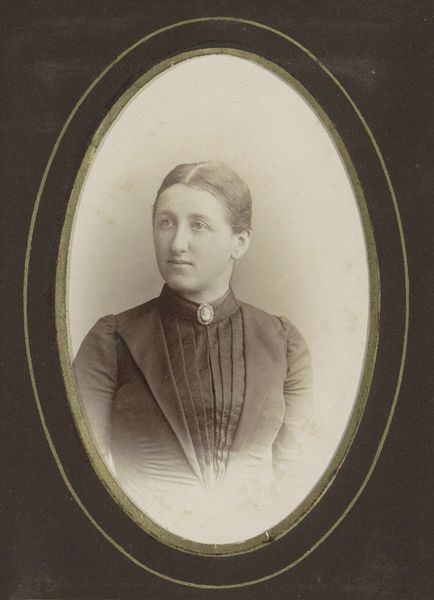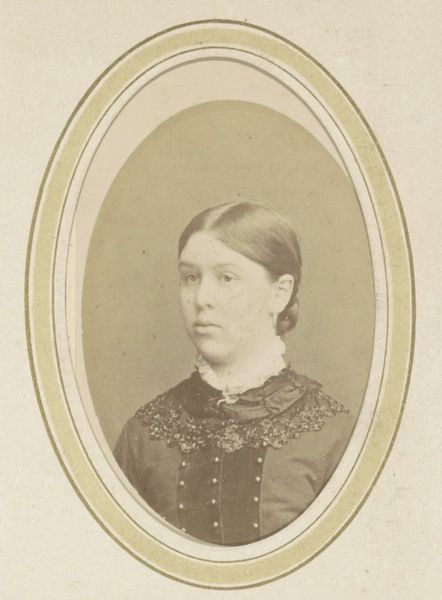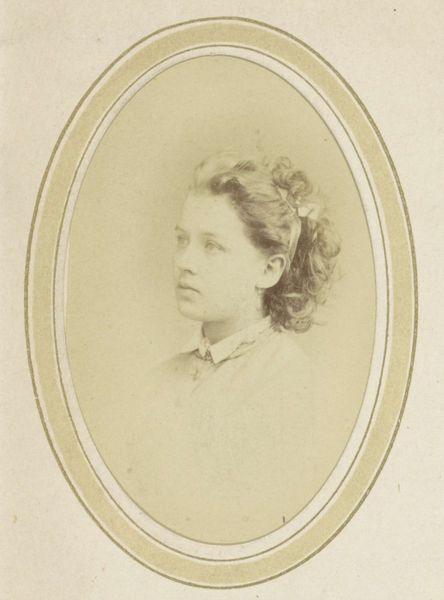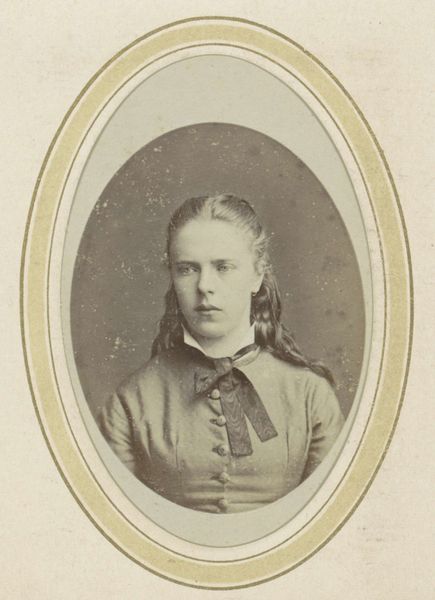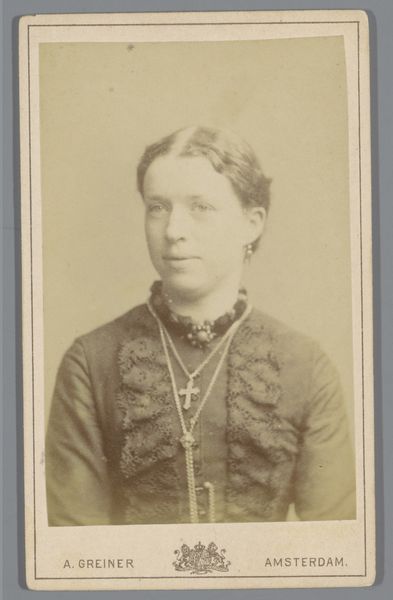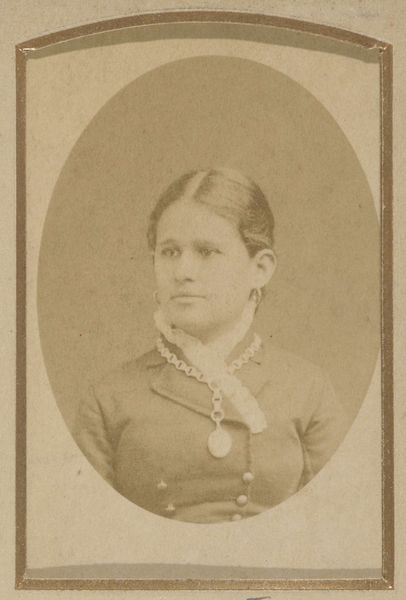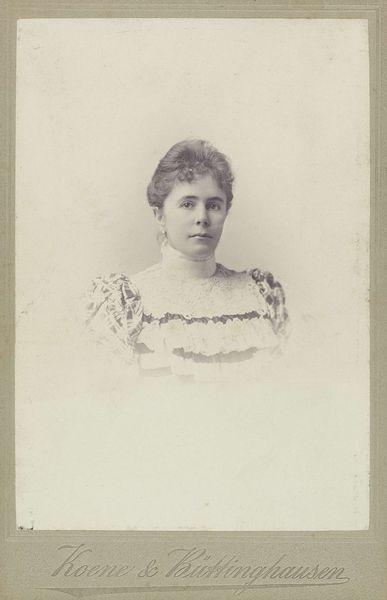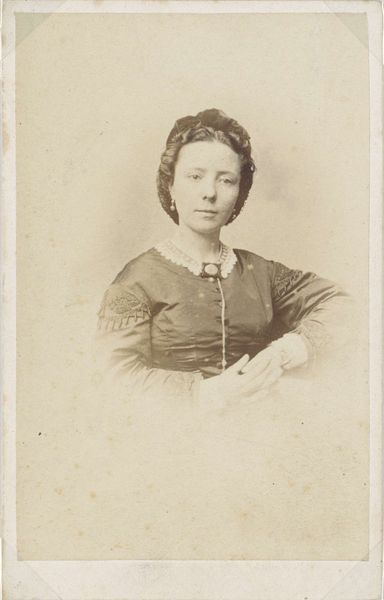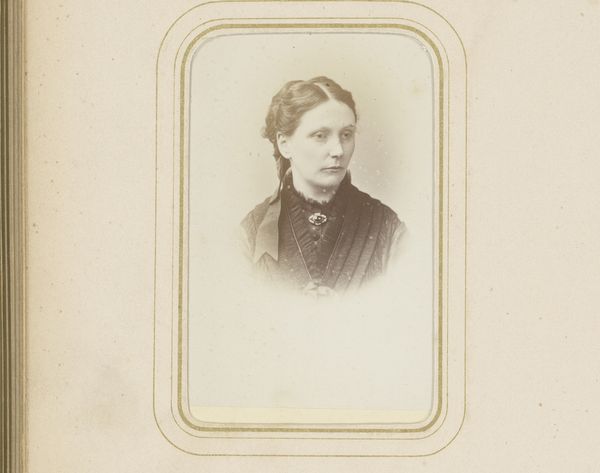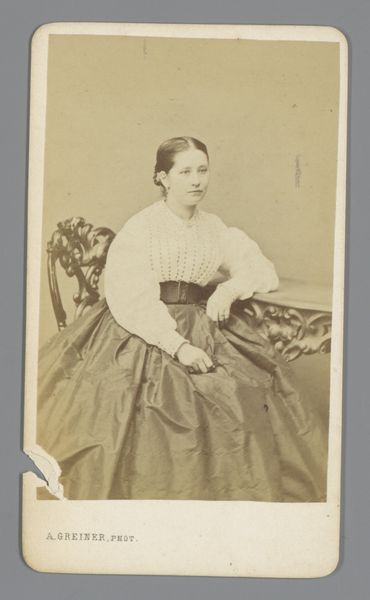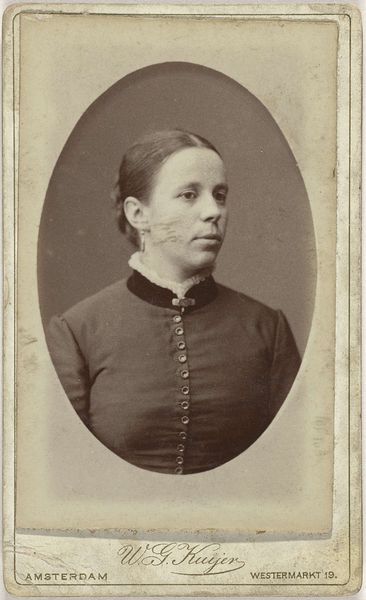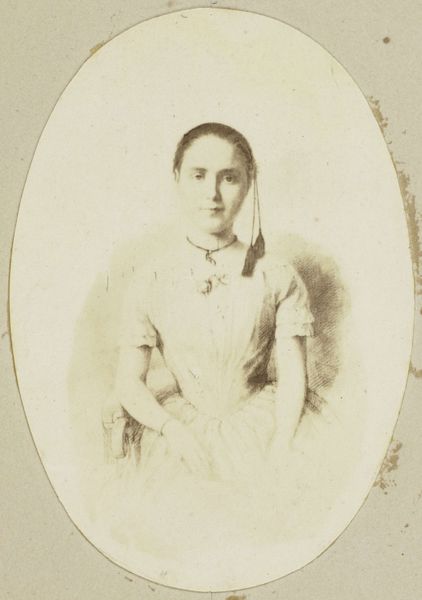
Studioportret van een jonge vrouw in een hooggesloten jurk c. 1863 - 1866
0:00
0:00
maxbuttinghausen
Rijksmuseum
photography
#
portrait
#
photography
Dimensions: height 80 mm, width 54 mm, height 296 mm, width 225 mm
Copyright: Rijks Museum: Open Domain
Editor: So here we have a photographic portrait from the mid-1860s by Max Büttinghausen. It's called "Studioportret van een jonge vrouw in een hooggesloten jurk," which translates to "Studio Portrait of a Young Woman in a High-necked Dress." She looks a little wistful, don't you think? Almost like she’s gazing off into the future… what's your read on this piece? Curator: Wistful, yes, but there's also a certain stoicism to her gaze. These early photographs are fascinating because they capture a particular moment when portraiture became more accessible, more democratic. Though posing for even a relatively short time in those early studios must have been excruciating. Imagine the heat, the bright lights... Do you think that maybe the very newness of this medium would make it easier, harder or just different than posing for a painting? Editor: Hmmm… good question! Maybe harder, just because you're pioneering something so novel. There isn’t really much precedent to go by? But tell me more about that "democratic" part… Curator: Well, prior to photography, portraiture was largely reserved for the wealthy. Now, suddenly, a wider range of people could immortalize their image. It became a way of asserting one’s place in society, marking a kind of arrival. This portrait, with its high-necked dress and careful composure, speaks to that sense of aspiration and social climbing. Editor: That’s such an interesting point— a photograph not just as a likeness but also as an aspirational statement. I didn't catch that on my first viewing! Curator: And you also have to wonder about the power dynamic, as she must have felt under the photographers scrutiny in this staged context. Perhaps an additional layer to what appears as wistful! These early portraits open up so many layers when you start to imagine beyond the surface, what's *not* being said. Editor: So true… this really changed how I understand the photo. I need to factor in historical context more!
Comments
No comments
Be the first to comment and join the conversation on the ultimate creative platform.

